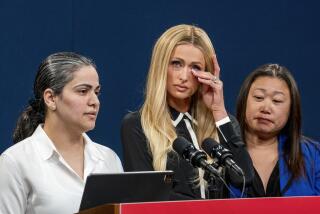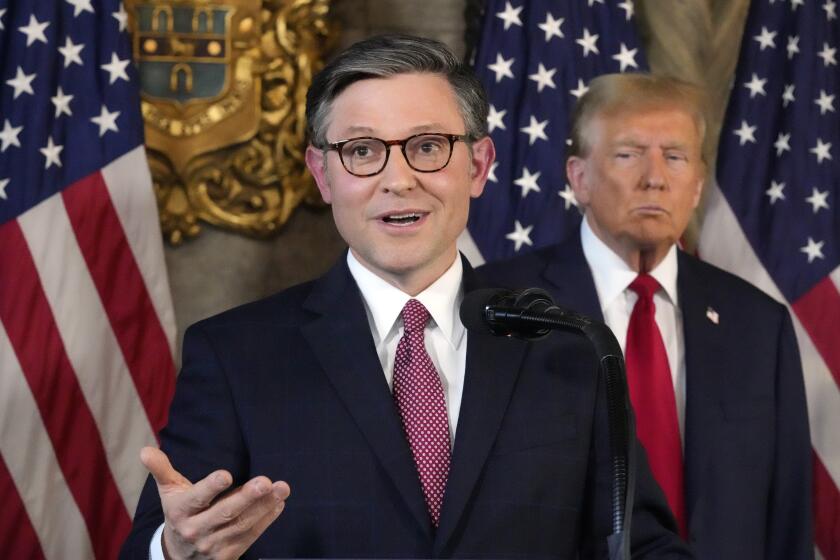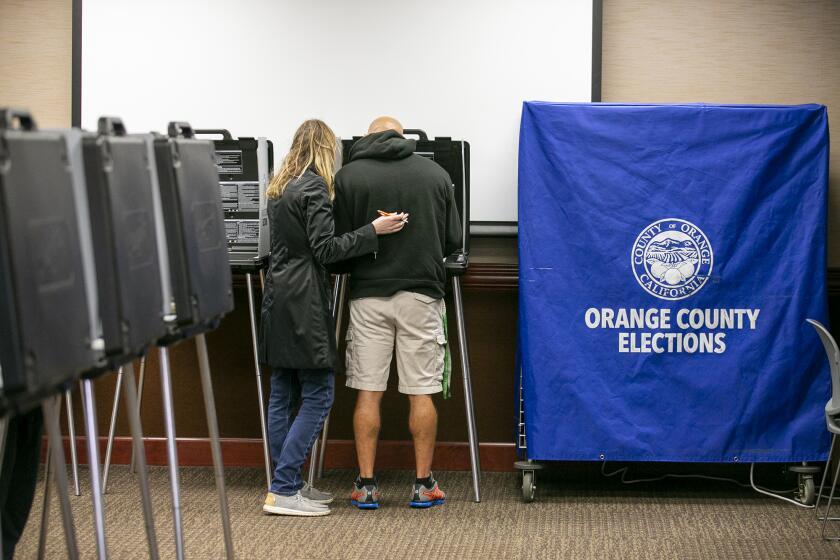Old-timer Jerry Brown introduces himself to young voters
On a Wednesday night this month, Jerry Brown took the microphone at a San Francisco bar and channeled his inner Obama, preaching post-partisanship and unity while pledging to fix California’s “very screwed-up state of politics.”
“We have the money. We got the people. We got the water. We got the ports and the environment. So we have it all,” he said. “We just gotta come together as Californians first, not as Republicans or Democrats but as people who care about the future, who care about one another.”
The crowd, mostly Democrats in their 20s and 30s, hoisted glasses and howled in approval. For them, it was the legend made flesh. Most hadn’t been born when Brown was governor three decades ago. What they know about him comes from parental tales about the counterculture “Moonbeam” who dated singer Linda Ronstadt, drove a beat-up Plymouth and traded the mansion for an apartment.
And to hear them tell it, Brown needs to work harder to fill in the blanks.
“They might think Jerry Brown has been around long enough for us to know who Jerry Brown is and what he stands for, but no one was alive to see that in my generation,” said Max Szabo, 27, president of the San Francisco Young Democrats. “We have to learn all over again with Jerry Brown.”
As Democrats try to reconnect with the young voters who turned out in record numbers to help elect Barack Obama president two years ago, Brown, 72, faces the added challenges of his age and a low-key campaign.
Until this month, polls suggested that silence had given his Republican rival, Meg Whitman, an opening with one of the Democratic Party’s most loyal voting blocs. But now, with election day less than two weeks away, Brown is making a big push for the youth vote.
A Field Poll last month showed the candidates splitting probable young voters ages 18 to 39. Another September survey, from the Public Policy Institute of California, showed Whitman with an eight-point edge among voters ages 18 to 34, due in no small part to her aggressive outreach to college campuses and large investment in social networking tools such as Facebook and Twitter.
However, as Brown joined the campaign in earnest last month, airing his first TV ads, he seems to have struck a chord. A new Public Policy Institute poll this week shows the Democrat making up ground, with younger voters preferring Brown over Whitman 50% to 28%; 16% were undecided.
On Thursday, Brown spoke to hundreds of students at San Diego State, his third college campus rally in a week. Obama will lend Brown his star power Friday at a USC rally as part of a national tour aimed at firing up younger voters.
Whitman, 54, continued to make the case Thursday that she was the best candidate for California’s youth.
“I’ve talked to a lot of kids who’ve graduated from college,” she told reporters after touring a factory in Los Angeles. “They’re moving in with their parents. They’re taking unpaid internships. There’s no jobs available.”
She continued: “So the No. 1 issue for [young voters] is jobs. I would just ask them, ‘Who is better to create jobs, to fix this economy so that you have opportunity for your children, your cohort of friends?’ It’s me.”
The flurry of activity underscores the importance of the youth vote and the depth of the Democratic enthusiasm gap this year, both in California and nationally. Brown is spending precious campaign time he would otherwise use to court independents shoring up his party’s most reliable voters in the deep-blue state of California.
According to the Pew Research Center, just 31% of young voters nationally have given a lot of thought to the election compared with 53% of older voters. The 22-point gap is double what it was in 2006, when young voters also turned out in high numbers for congressional Democrats. Less than half of young voters say they will definitely vote in November, 22 points below any other age group.
Overall, California Democrats are much less excited about the election than their Republican counterparts. Part of the party’s problem is Obama’s waning popularity. While young voters continue to give the president high ratings, many at Brown’s San Francisco event said they were disappointed with Obama’s performance.
“There was so much enthusiasm from the last campaign. Now there’s so much disillusionment,” said Nicholas Berger, 30, a filmmaker. Obama has “done a lot of good things, but he’s done a bad job of selling his accomplishments and his ideas to the public.”
At UCLA last week, former President Clinton appeared with Brown to make the case that young voters need to follow through on what they started in 2008.
“It is not enough to have voted for a new president if you will not help him govern and stick behind the members of Congress who stood for him,” Clinton said.
Organizing for America, the remnants of the Obama campaign, has set up shop on 30 college campuses in California, recruiting more than 1,000 students to help spur young voters to the polls. They have their work cut out for them: The Public Policy Institute poll found that fewer than 40% of young voters are satisfied with their choices in the gubernatorial race.
On Thursday at San Diego State, Brown packed an assembly hall in the student union, where he joked that most of the attendees hadn’t been born when he left office in 1982. College tuition, he recalled, was $125 a semester when he attended UC Berkeley in the 1960s.
He got big applause as he pledged to pump more money into higher education and deliver 500,000 green jobs through investment in renewable energy.
Brown acknowledged his late campaigning start but said it was good strategy.
“Everyone said, ‘Where’s your campaign? What’s happening?’” he said. “Well, we waited till Labor Day, and now you’ve seen the results are coming in and it’s pretty darn good.”
Times staff writer Seema Mehta contributed to this report from Los Angeles.
More to Read
Get the L.A. Times Politics newsletter
Deeply reported insights into legislation, politics and policy from Sacramento, Washington and beyond. In your inbox three times per week.
You may occasionally receive promotional content from the Los Angeles Times.






